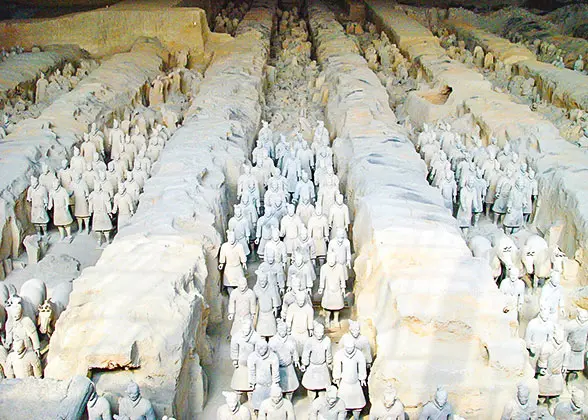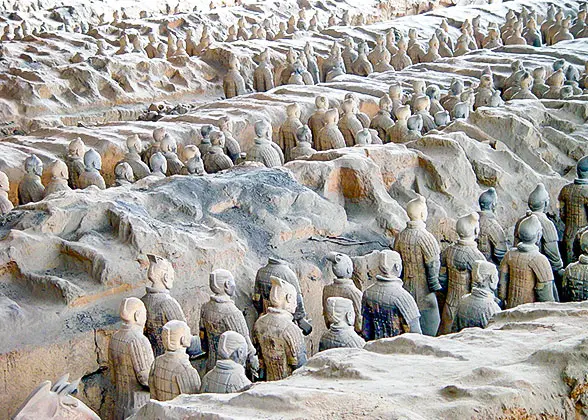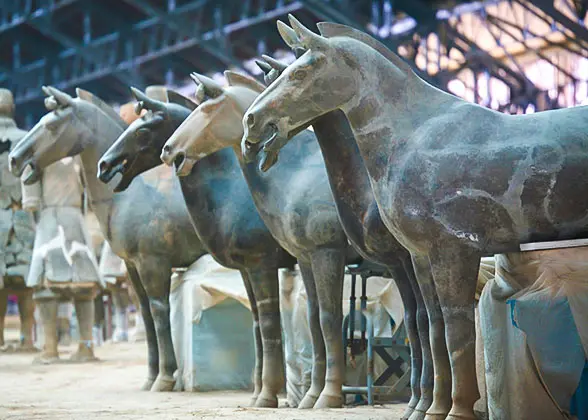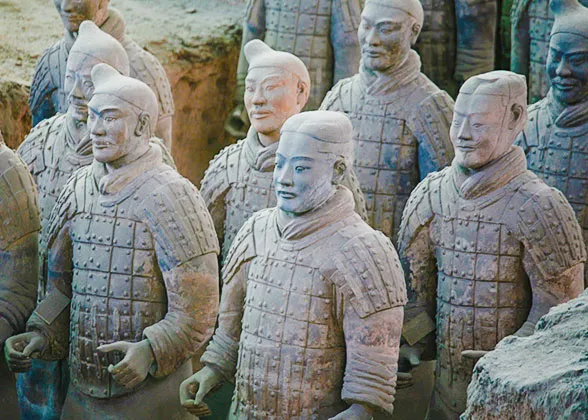Military Formation of Terracotta Army
Pit 1 is designed for defending the Mausoleum of Emperor Qin Shi Huang rather than for battle;
Pit 2 is more like a camp instead of an array;
Pit 3 functions as the headquarter of the army.
Pit 4 has no terracotta soldiers, horses or other cultural relics, but only backfilled soil.
The Pit 1, 2 and 3 reveal the real military arrangement of the Qin army, including disposition of infantry, cavalry, chariot soldiers, archers, and the usage of weapons.
|
|
|
|
Military Formation of Terracotta Army in Pit 1
According to the relevant historical records, the Terracotta Warriors of Pit 1 are a military defense troop to protect the Qin Shi Huang Mausoleum. It is the largest among the three pits with an area of 14,260 square meters (17,055 square yards). It reveals the reality of military formation of the Qin army. This pit contains more than 6,000 lifelike terracotta warriors, including: chariot and infantry soldiers, and well-equipped chariots. The first three rows are 204 archers in armor. On two sides and the end of the formation, are warriors facing outside. Behind the archers are over 6,000 infantry with weapons, standing in 38 lines, dotted with 45 chariots.
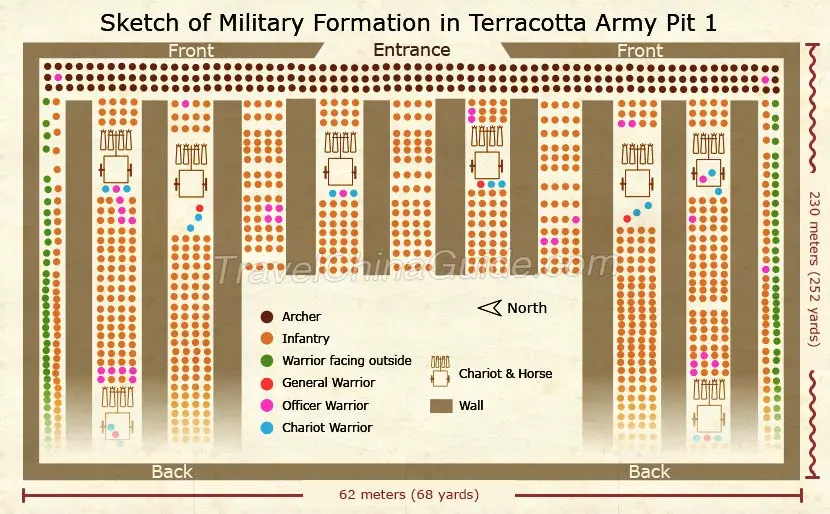 |
| Military Formation of Terracotta Army Pit 1 |
Military Formation of Terracotta Army in Pit 2
Some experts guessed that the role of the pit 2 is to reveal the essential elements of an ancient military camp, instead of show the military arrangement at that time. Hence, it’s uncertain to say the military formation of terracotta army in pit 2 is for attacking or not.
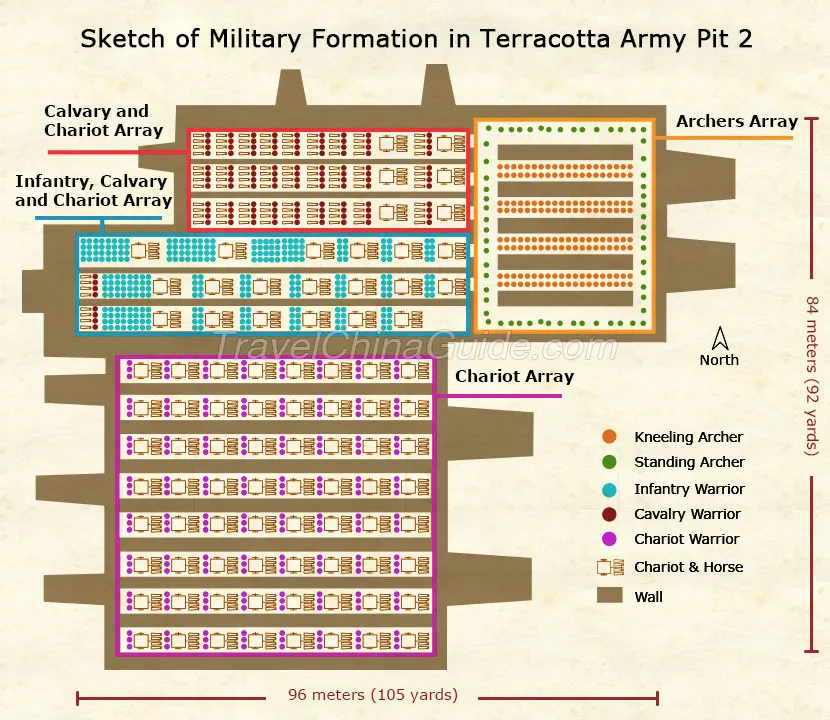 |
| Military Formation of Terracotta Army Pit 2 |
Military Formation of Terracotta Army in Pit 3
Altogether 68 terracotta warriors, and one chariot were found in Terracotta Warriors Pit 3. In addition, many ceremonial weapons were unearthed from this pit as well. Compared to pit 1 and pit 2, this one had minimum area with around 520 square meters (622 square yards), and was regarded as a military headquarter. The pottery warriors were arranged face to face, and orderly on both sides of the passageways in the pit 3.
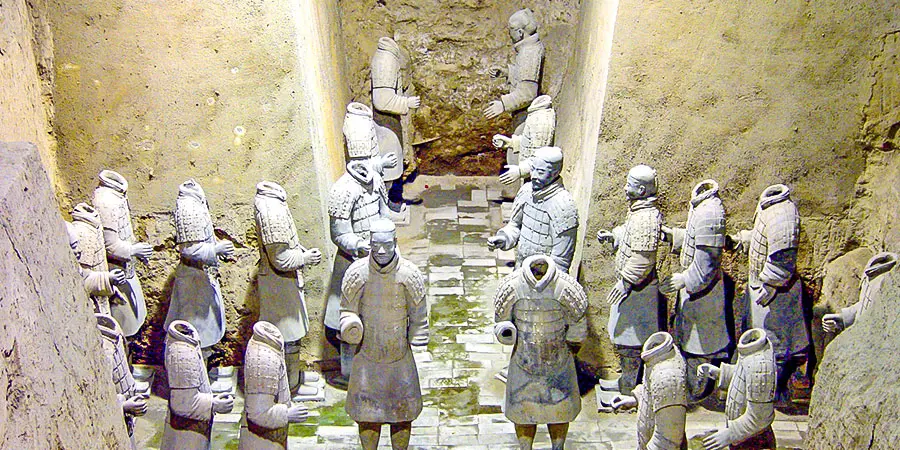 |
| Military Formation in Pit 3 |
Different Weapons Armed to Terracotta Warriors
The peripheral soldiers in pit 1 were equipped with range weapons: bows and crossbows, mainly to assault the enemy from afar. The remaining main force had various weapons, such as spears, swords, and halberds. The separate small array scattered in terracotta warriors pit 2, included plenty of excellent archers, and they were armed with bows and crossbows to play a vital role when assaulting, defending, ambuscading and breaking through in battle. This kind of arrangement reflects the mature tactical thoughts in ancient China.
